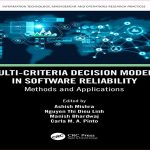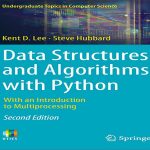- عنوان کتاب: Modern Analytic Methods for Computing Scattering Amplitudes
- نویسنده: Simone Zoia
- حوزه: تحلیل ریاضی
- سال انتشار: 2022
- تعداد صفحه: 221
- زبان اصلی: انگلیسی
- نوع فایل: pdf
- حجم فایل: 3.1 مگابایت
رویکرد علمی برای درک قوانین طبیعت مبتنی بر مقایسه بین تئوری و آزمایش است. در اصطلاح افراد عادی، یک نظریه مجموعهای از قوانین است که به طور ریاضی نحوه عملکرد ما را توصیف میکند. ما از این قوانین برای پیشبینی نتیجه یک آزمایش خاص استفاده میکنیم و مقایسه با نتایج واقعی آزمایش ممکن است این نظریه را رد یا تأیید کند. فیزیک ذرات به کوچکترین اجزای سازنده جهان – ذرات بنیادی – و نحوه تعامل آنها می پردازد. بهترین توصیف ما از ذرات بنیادی توسط مدل استاندارد فیزیک ذرات (SM) ارائه شده است، که ذرات را به عنوان نوسانات “میدان های کوانتومی” در فضا-زمان تلقی می کند. موفقیت چشمگیر SM در توصیف دنیای میکروسکوپی یکی از بزرگترین شاهکارهای فکری بشریت است. با این حال، این نظریه در پرداختن به انواع نگرانیهای نظری و پدیدههای مشاهدهشده – گرانش، واضحترین آنها، ناکام است. درک محدودیتهای SM و محدود کردن گسترشهای آن از اهمیت اولیه برخوردار است. دامنه های پراکندگی پل بین تئوری و آزمایش در نظریه های میدان کوانتومی (QFTs) هستند. به طور کلی، دامنه یک فرآیند پراکندگی، توزیع احتمال آن را رمزگذاری میکند: برای یک حالت اولیه معین – مثلاً دو پروتون در حال برخورد – دامنه پراکندگی به ما میگوید که تولید برخی ذرات دیگر طبق نظریه چقدر محتمل است. قوانین QFT با این حال پیچیده هستند و دامنه های پراکندگی را می توان تقریباً به صورت سری در ثابت های جفت که برهمکنش ها را وزن می کنند محاسبه کرد. ما می دانیم – حداقل در اصل – چگونه هر جمله از سری را محاسبه کنیم، و گنجاندن عبارات بیشتر، پیش بینی را دقیق تر می کند. با این حال، با افزایش ترتیب در کوپلینگ ها – که به آن “مرتب حلقه” نیز می گویند – یا تعداد ذرات، محاسبه سخت تر و دشوارتر می شود. در عمل، ما به تعداد اصطلاحات لازم نیاز داریم تا عدم قطعیت نظری را با عدم قطعیت تجربی مقایسه کنیم تا مقایسه از نظر آماری معنادار باشد.
The scientific approach to understanding the laws of nature is based on the comparison between theory and experiment. In laypersons’ terms, a theory is a set of rules which describe mathematically how we think things work. We use these rules to predict the outcome of a certain experiment, and the comparison against the actual results of the experiment may disprove or uphold the theory. Particle physics is concerned with the tiniest building blocks of the universe—the fundamental particles—and the way they interact. Our best description of fundamental particles is given by the StandardModel of particle physics (SM), which treats particles as oscillations of “quantum fields” permeating the space-time. The spectacular success of the SM at describing the microscopic world is one of humanity’s greatest intellectual feats. Yet, this theory fails to address a variety of theoretical concerns and observed phenomena—gravity, to say themost obvious.Understanding the limitations of the SM and constraining its extensions is of primary importance. Scattering amplitudes are the bridge between theory and experiments in Quantum Field Theories (QFTs). Roughly speaking, the amplitude of a scattering process encodes its probability distribution: for a given initial state—say two colliding protons—the scattering amplitude tells us how likely the production of certain other particles is according to the theory. The rules of QFT are however complicated, and scattering amplitudes can only be computed approximately as series in the coupling constants which weigh the interactions. We know—at least in principle—how to compute each term of the series, and including more terms makes the prediction more accurate. The computation however becomes more and more difficult as the order in the couplings—also called the “loop order”—or the number of particles increase. In practice, we need as many terms as is necessary to make the theoretical uncertainty comparable with the experimental one so that the comparison is statistically significant.
این کتاب را میتوانید از لینک زیر بصورت رایگان دانلود کنید:
Download: Modern Analytic Methods for Computing Scattering Amplitudes
































نظرات کاربران